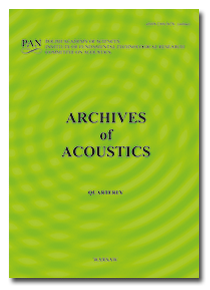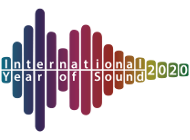Archives of Acoustics,
32, 2, pp. 303-312, 2007
Proposals of exposure criteria for the assessment of low frequency noise at workplaces in industrial control rooms and office-like areas
The aim of the study was to recommend methods for assessing low frequency noise (LFN) in the occupational environment to prevent annoyance and its effects on work performance. Three different evaluating methods and corresponding admissible values were proposed: (i) method I - frequency analysis in 1/3-octave bands 10-250 Hz, (ii) method II - consisting in 1/3-octave band measurements and determination of low frequency equivalent-continuous A-weighted sound pressure level (SPL) in the frequency range 10-250 Hz, and (iii) method III - based on equivalent-continuous A-weighted SPL corrected due to the presence of low frequencies and tonal character of LFN. Separate noise limits were recommended for workplaces in the control rooms and office-like areas.
The proposed criteria were verified in the field study on subjective noise annoyance rating. The subjects, 35 male workers, employed in the industrial control rooms, aged 40.1±7.2 years, exposed to LFN at A-weighted SPL of 48-61 dB, were asked to rate noise annoyance at their workplace using a 100-score graphical rating scale. Noise conditions in the control rooms were evaluated according to proposed assessment criteria. The subjective ratings of LFNs were compared to objective results from various assessing methods. The relations between annoyance and excesses of proposed limits were analyzed using Pearson correlation coefficient (r). Linear relationships between the subjective ratings and results from all proposed exposure criteria were observed (0.550≤r≤0.673, p<0.001). However, the highest correlation coefficient was found for method II (r=0.673).
The proposed criteria were verified in the field study on subjective noise annoyance rating. The subjects, 35 male workers, employed in the industrial control rooms, aged 40.1±7.2 years, exposed to LFN at A-weighted SPL of 48-61 dB, were asked to rate noise annoyance at their workplace using a 100-score graphical rating scale. Noise conditions in the control rooms were evaluated according to proposed assessment criteria. The subjective ratings of LFNs were compared to objective results from various assessing methods. The relations between annoyance and excesses of proposed limits were analyzed using Pearson correlation coefficient (r). Linear relationships between the subjective ratings and results from all proposed exposure criteria were observed (0.550≤r≤0.673, p<0.001). However, the highest correlation coefficient was found for method II (r=0.673).
Keywords:
low frequency noise, occupational exposure, annoyance, measuring methods, exposure limits
Full Text:
PDF
Copyright © Polish Academy of Sciences & Institute of Fundamental Technological Research (IPPT PAN).





